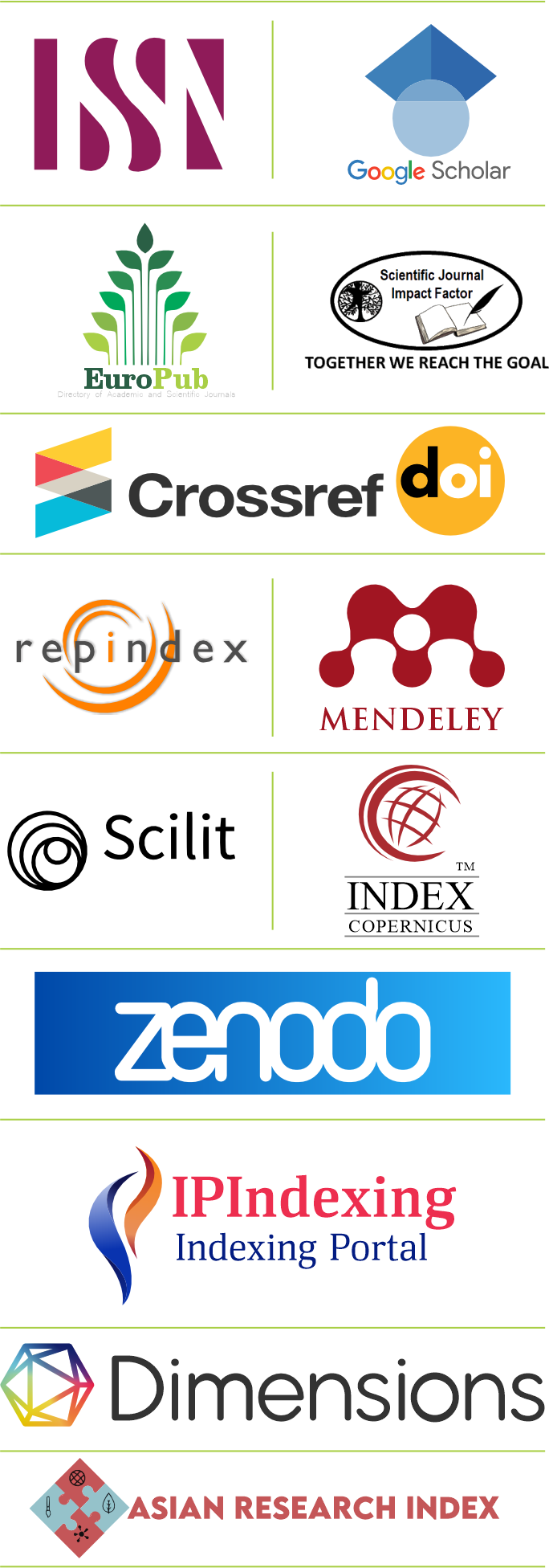Comparative Performance Analysis of USA Islamic Equity Market Indexes with Diverse Screening Criteria
DOI:
https://doi.org/10.55737/qjssh.v-iv.24279Keywords:
Islamic Indexes, Quantitative Screens, Performance, Leverage EffectAbstract
The performance comparison of Islamic and conventional indexes has often been marred by inconsistent index selection, leading to in-generalizable and misleading conclusions. A common misconception is attributing the performance differences of Islamic indexes primarily to their unique screening criteria without ensuring consistency in index choice. This study addresses this gap by empirically examining the impact of quantitative screens on the performance of Islamic indexes, ensuring consistency in their selection. Monthly data from January 2008 to December 2016 for Islamic indexes provided by MSCI, FTSE, Dow Jones, and S&P is analyzed using performance measures such as the Information Ratio and Sharpe Ratio. Results reveal significant variations in the performance of Islamic indexes’ after adjusting for risk. Furthermore, indexes with lower aggregate debt tend to experience smaller gains in bullish markets and more minor losses in bearish markets, indicating a leverage effect. These findings provide insights into the performance dynamics of Islamic indexes and highlight the importance of consistent methodology in comparative studies.
References
Abdul Rahman, A., Azlan Yahya, M., & Herry Mohd Nasir, M. (2010). Islamic norms for stock screening: A comparison between the Kuala Lumpur stock exchange Islamic index and the Dow Jones Islamic market index. International Journal of Islamic and Middle Eastern Finance and Management, 3(3), 228-240.
Ashraf, D., & Khawaja, M. (2016). Does the Shariah screening process matter? Evidence from Shariah compliant portfolios. Journal of Economic Behavior & Organization, 132, 77–92. https://doi.org/10.1016/j.jebo.2016.10.003
Derigs, U., & Marzban, S. (2008). Review and analysis of current Shariah‐compliant equity screening practices. International Journal of Islamic and Middle Eastern Finance and Management, 1(4), 285–303. https://doi.org/10.1108/17538390810919600
Derigs, U., & Marzban, S. (2009). New strategies and a new paradigm for shariah-compliant portfolio optimization. Journal of Banking & Finance, 33(6), 1166-1176. https://doi.org/10.1016/j.jbankfin.2008.12.011
Ho, C. S. (2015). International comparison of Shari’ah compliance screening standards. International Journal of Islamic and Middle Eastern Finance and Management, 8(2), 222-245. https://doi.org/10.1108/imefm-07-2014-0065
Ho, C. S., Abd Rahman, N. A., Yusuf, N. H., & Zamzamin, Z. (2014). Performance of global Islamic versus conventional share indices: International evidence. Pacific-Basin Finance Journal, 28, 110-121. https://doi.org/10.1016/j.pacfin.2013.09.002
Kidd, D. (2012). Risk-Adjusted Performance Measures: A Case Study. Investment Risk and Performance Feature Articles, 2012(1), 1-4.
Oranzo, M. (2013). How Indexing Impacts Shariah-Compliant Investing. http://us.spindices.com/documents/education/shariah-pe-0913.pdf
Philips, C. B., & Kinniry Jr, F. M. (2012). Determining the Appropriate Benchmark: A Review of Major Market Indexes. Vanguard Research.
Reilly, F. K., & Akhtar, R. A. (1995). The benchmark error problem with global capital markets. The Journal of Portfolio Management, 22(1), 33-52. https://doi.org/10.3905/jpm.1995.409547
Roll, R. (1980). Performance evaluation and benchmark errors (I). The Journal of Portfolio Management, 6(4), 5-12. https://doi.org/10.3905/jpm.1980.408760
Shariq, M., & Abd Sukor, M. E. B. (2021). SENSITIVITY OF USA ISLAMIC EQUITY MARKET INDEXES TO CHANGES IN INTEREST RATES: A COMPARATIVE ANALYSIS. International Journal of Accounting, 6(32), 229-246.
Sharpe, W. F. (1966). Mutual fund performance. The Journal of Business, 39(S1), 119. https://doi.org/10.1086/294846
Sharpe, W. F. (1992). Asset allocation: Management style and performance measurement. The Journal of Portfolio Management, 18(2), 7-19. https://doi.org/10.3905/jpm.1992.409394
STULZ, R. M. (2005). The limits of financial globalization. The Journal of Finance, 60(4), 1595-1638. https://doi.org/10.1111/j.1540-6261.2005.00775.x
Treynor, J. L., & Black, F. (1973). How to use security analysis to improve portfolio selection. The Journal of Business, 46(1), 66. https://doi.org/10.1086/295508
Walkshäusl, C., & Lobe, S. (2012). Islamic Equity Investing: Alternative Performance Measures and Style Analysis. The Journal of Investing, 21(4), 182–189. https://doi.org/10.3905/joi.2012.21.4.182
Walkshäusl, C., & Lobe, S. (2012). Islamic investing. Review of Financial Economics, 21(2), 53-62. https://doi.org/10.1016/j.rfe.2012.03.002
Downloads
Published
Issue
Section
License
Copyright (c) 2024 Dr. Muhammad Shariq, Dr. Muhammad Naveed Jan, Faisal Kamal

This work is licensed under a Creative Commons Attribution-NonCommercial 4.0 International License.





